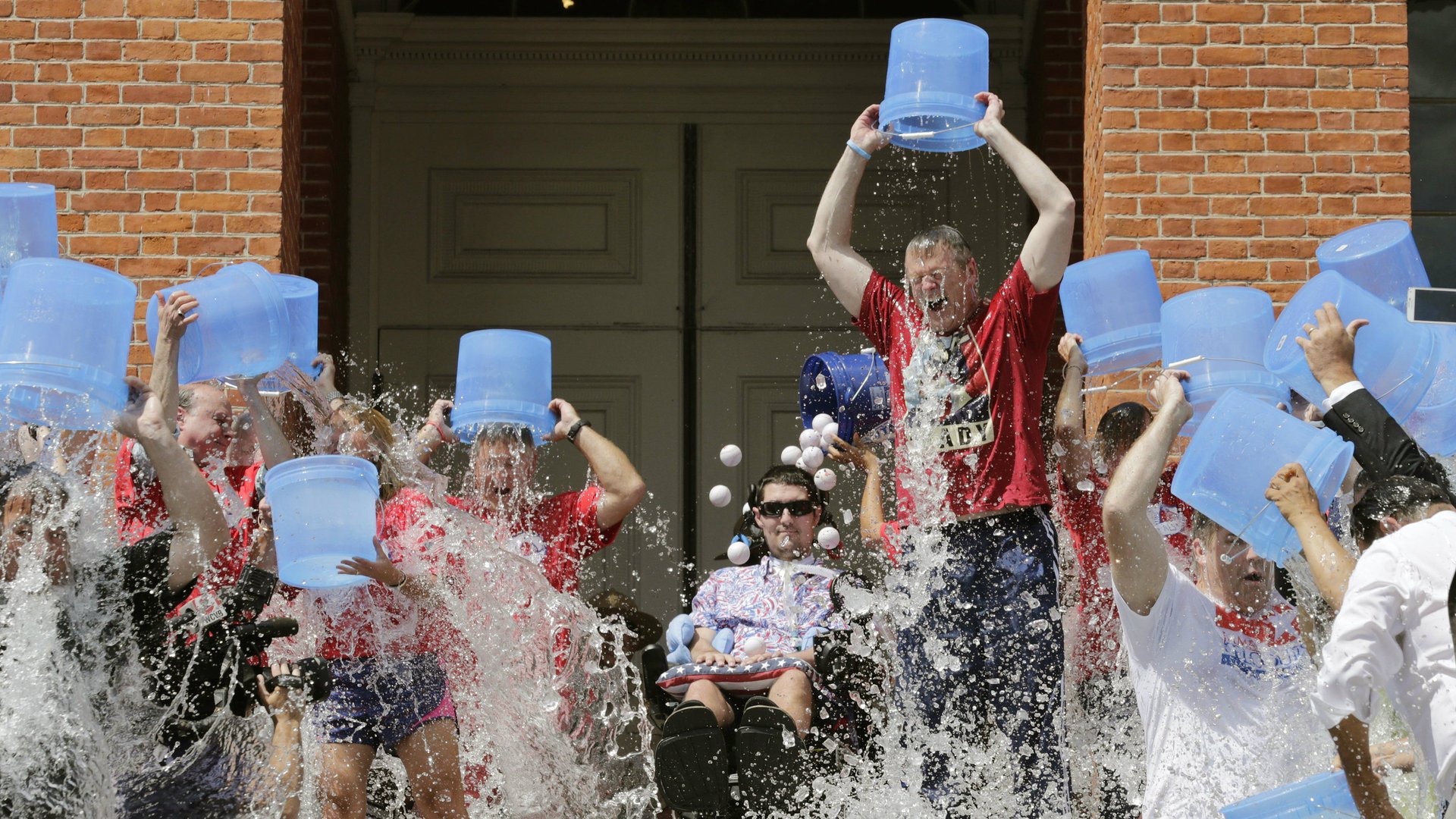The ice bucket challenge worked: There’s been a breakthrough in ALS research
Cast your mind back to summer of 2014, and the sight of people pouring buckets of ice and water over their heads. Seventeen million YouTube videos and two years later, the effort has born fruit. Scientists funded by the campaign have found a new gene linked to the rare but devastating amyotrophic lateral sclerosis (ALS), or Lou Gehrig’s disease.


Cast your mind back to summer of 2014, and the sight of people pouring buckets of ice and water over their heads. Seventeen million YouTube videos and two years later, the effort has born fruit. Scientists funded by the campaign have found a new gene linked to the rare but devastating amyotrophic lateral sclerosis (ALS), or Lou Gehrig’s disease.
The Ice Bucket Challenge began as a campaign by the charitable ALS Association to raise awareness and donations for research on the disease. As netizens took it to heart in a summer fever, some forgot to mention ALS or the campaign altogether. Critics bemoaned the passive “slacktivism.” But the campaign raised a staggering $115 million in six weeks, which the ALS Association immediately put to good use, pledging $21.7 million to six programs searching for treatments and a cure. (It put the rest into investments.)
Of that, $1 million went to Project MinE, an international collaboration that aimed to sequence the DNA of 15,000 ALS patients. MinE already spanned 11 countries, but had been unable to stretch to the US until the ice buckets started pouring.
The causes of ALS remain unknown, but in around 10% of cases, another family member also has or had it. That hints that genes are at least partly responsible. The question is which genes.
This week Project MinE reported a major success: It’s pinpointed a gene called NEK1 as a likely culprit. NEK1 helps maintain the structure of neurons and plays a part in their energy flow and DNA repair. If it stops working, it could contribute to the neuronal degradation that causes ALS.
Specifically, what the MinE researchers found was that, of 1,022 people with the inherited form of ALS (i.e., those with affected family members), 3% had mutated forms of NEK1. That 3% might not sound like much, but given how little is known about the disease’s genetic origins, it’s a start. Building on their find, the researchers then looked for NEK1 mutations in over 13,000 patients with the more common, non-inherited form of ALS. Again, they found mutations that would stop NEK1 from doing its job.
The ALS Association says this makes NEK1 one of the most common contributors to the disease found so far. Figuring out what’s gone wrong with NEK1—and fixing it—is a possible course for therapies to treat ALS.
Of course, the money raised from the Ice Bucket Challenge is a credit to people’s generosity. But it also raises questions about what society responds to and disparities in funding for different diseases.
Devastating as ALS is, it affects around 420,000 people in the world. Neglected tropical diseases like malaria, meningitis, and hepatitis C affect over 1 billion people. In 2014, the same year the ice bucket challenge raised $115 million, global funding for these neglected diseases fell by $62 million. And the World Health Organization’s contingency fund for emergency outbreaks like Ebola or Zika virus is just $100 million. That’s not enough to run the large-scale research programs needed to understand a new contagion.